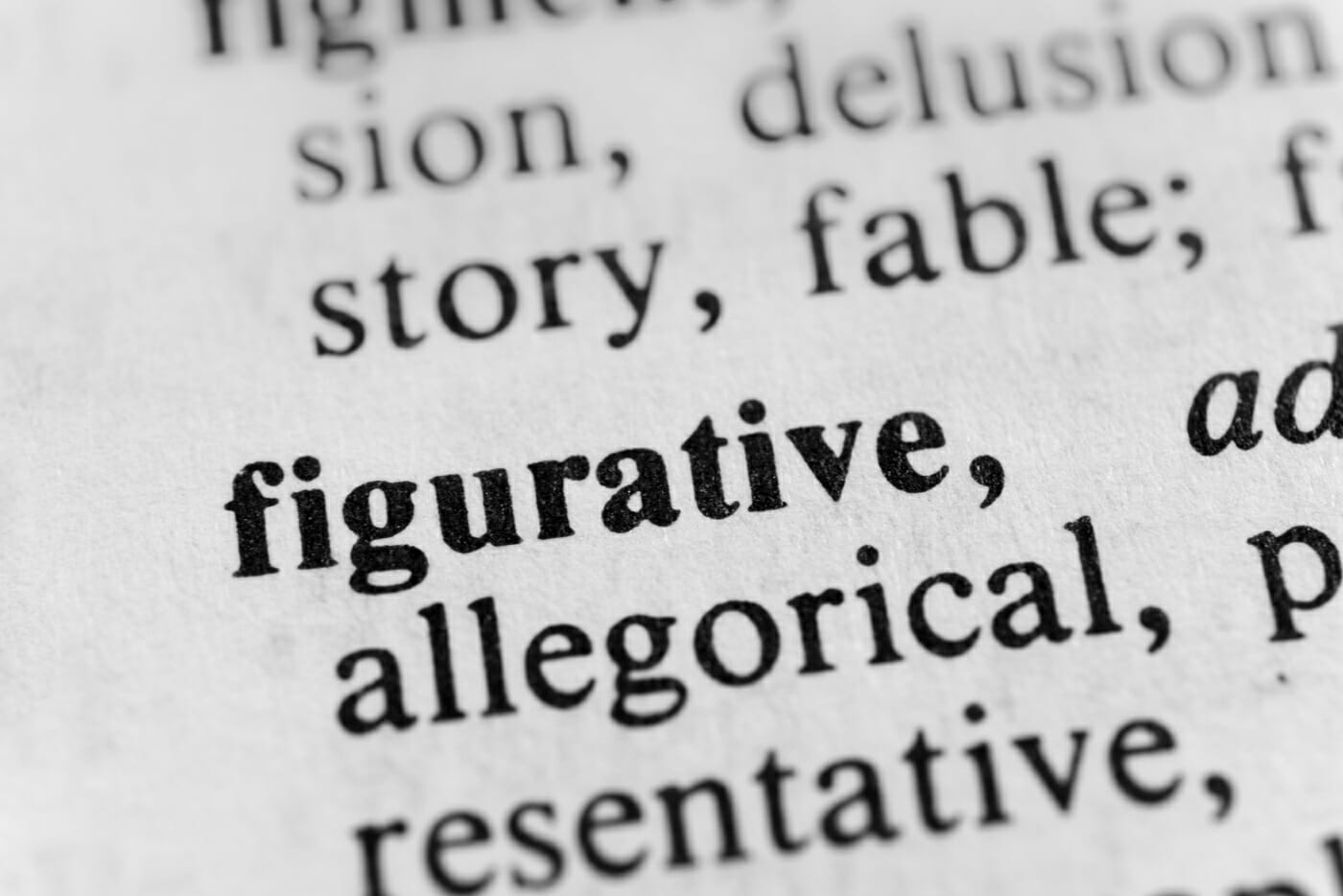Figurative Language Poem 6 From X Review Questions
What is Figurative Language?
Figurative language refers to the employ of words in a fashion that deviates from the conventional order and meaning in order to convey a complicated meaning, colorful writing, clarity, or evocative comparison. It uses an ordinary sentence to refer to something without directly stating it. Understanding figurative linguistic communication is an important part of reading the Management Discussion and Assay (Physician&A) , where management may employ a metaphor to assist explain complicated concepts or directions that the company is taking.

Fiction writers use figurative language to engage their audition using a more creative tone that provokes thinking and sometimes sense of humor. It makes fiction writing more interesting and dramatic than the literal language that uses words to refer to statements of fact.
Types of Figurative Language
At that place are several types of figurative languages that are used in modern writing. They include:
ane. Simile
A simile is a figure of speech that compares two dissimilar things and uses the words "like" or "as" and they are usually used in everyday advice . A simile is used with the aim of sparking an interesting connection in the reader'southward mind.
An example of a simile is, "The cat sat in the chair like a king overlooking his kingdom." The cat'southward sitting posture is compared to that of a rex who relaxes in a special chair that is reserved for him and non whatsoever other person in the kingdom.
Other examples of similes include:
- The boy was every bit brave every bit a lion in the jungle.
- The banana was as busy as a bee when she was preparing the podium for the presidential address.
- The new instructor is as alpine as a giraffe.
- The new neighbor is as curious as a cat; nil escapes her attending.
ii. Metaphor
A metaphor is a statement that compares two things that are not akin. Unlike similes, metaphors do not employ the words "similar" or "equally." Such statements but make sense when the reader understands the connection between the 2 things existence compared.
An example of a popular metaphor is "Fourth dimension is coin." The argument compares fourth dimension and money, and it does non literally mean that the corporeality of fourth dimension you lot have equals the coin that you have. Instead, it means that time is a valuable resource, and it should exist used effectively to earn coin. Whatever time wasted means that a person loses the chance to make more than coin.
Other examples of metaphors include:
- The warrior has a heart of rock.
- Dearest is a battlefield.
- Infant, y'all are my sunshine.
- Chaos is a friend of the legislator.
- I am drowning in a sea of grief.
- My roommate is going through a rollercoaster of emotions.
3. Hyperbole
Hyperbole is an exaggeration that is created to emphasize a point or bring out a sense of humor. It is often used in everyday conversations without the speaker noticing information technology. The exaggeration is so outrageous that no one would believe that it is truthful. It is used to add together depth and colour to a statement.
An example of hyperbole is, "I would die for yous." The sentence does non necessarily mean that one person is literally willing to dice for the other, but it used to exaggerate the amount of love that one person has for another person. Expiry is just used to show the extent of affection.
Other examples of hyperbole:
- I take told you a million times to wash the dishes.
- You are so slender that the current of air tin can carry you away.
- The afternoon is so bright that the lord's day would accept to wear sunglasses.
- Yous snore like a freight train.
iv. Personification
Personification is the attribution of human characteristics to non-living objects. Using personification affects the style readers imagine things, and it sparks an involvement in the bailiwick.
An example of personification is, "The sun greeted me when I woke upwards in the morning." The sun is a not-human object but has been given human characteristics since greetings can only exist performed by living creatures.
Other examples of personification include:
- April is the cruelest month of the year.
- The radio stared at me.
- The auto brakes screamed all through the journey.
- The car stopped with a groaning complaint.
5. Synecdoche
Synecdoche is a type of figurative language that uses i part to refer to the whole, or the whole to refer to the office. For case, a set up of wheels tin can be used to refer to a vehicle and a suit to refer to a businessman . When referring to a machine as a fix of wheels, the wheels are only a function of the motorcar and non the whole affair. Similarly, a typical businessman wears a suit alongside other accessories such as a watch and a briefcase.
Other examples of synecdoche include:
- Bread can exist used to refer to food in full general or money.
- Caput can refer to counting cattle or people.
- Hired hands can be used to refer to workers.
6. Onomatopoeia
Onomatopoeia is a linguistic communication that names something or an action past imitating the sound associated with information technology. They add together some reality to the writing. Examples of onomatopoeia include:
- The fireplace heater hissed and cracked.
- The truck engine roared as it climbed the loma.
- The alarm clock buzzed at the time I was going to the bathroom.
More than Resources
Thank you for reading CFI'due south guide to Figurative Language. To keep learning and developing your knowledge, we highly recommend the additional CFI resources beneath:
- Interpersonal Skills
- Negotiation Tactics
- Public Speaking
- The Language of Business – Do Yous Speak Information technology?
Source: https://corporatefinanceinstitute.com/resources/knowledge/other/figurative-language/